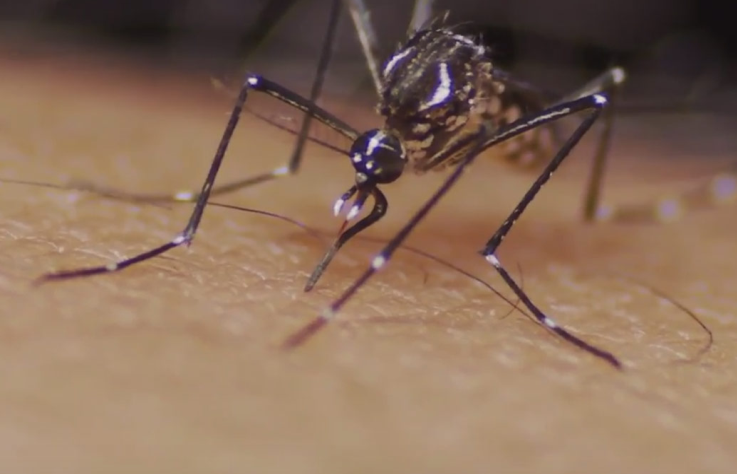November 23, 2018
The mosquito Aedes aegypti should be considered one of the most dangerous animals on the planet. This is because the Aedes aegypti female carries several viruses that can cause diseases such as yellow fever, dengue and Zika. Its strong taste for human blood and voracious appetite – it feeds once every 1.5 days – make Aedes aegypti very efficient at passing on the viruses among humans. This mosquito is responsible for hundreds of millions of viral infections every year throughout the tropics and sub-tropics.

Current methods to prevent mosquito-borne disease typically rely on suppressing mosquitoes with pesticides. The efficacy of these methods is generally short-lived because mosquitoes quickly develop resistance to the pesticides, which is often aggravated by ineffective implementation and lack of resources. With recent advances in insect genetic engineering, however, there are unique opportunities to develop safe and long-lasting alternatives to pesticide-based mosquito control.
Until now, development of genetic-based strategies for controlling Aedes aegypti populations has been hampered by the lack of a high-quality reference genome. An accurate map of the mosquito’s DNA is a prerequisite to identify gene targets that could be manipulated, for example, to disrupt the mosquito’s ability to locate a human blood meal, to make sterile males, to convert females into non-biting males, or to render the insect incapable of harboring viruses. The previous version of the Aedes aegypti genome, published over a decade ago, was literally an unassembled jigsaw puzzle of thousands of pieces.
An international group of researchers and corporate partners, led by Leslie Vosshall of Rockefeller University, including scientists from the ZikaPLAN consortium, recently produced a high-quality genome blueprint that largely surpasses its predecessor. The 3-year-long collaboration not only led to a comprehensive catalog of the mosquito’s genes mapped to their respective chromosomes, but also to the demonstration of its utility for mosquito research1.
Equippd with the new reference genome, the researchers discovered new genes coding for ionotropic receptors that guide mosquitoes to human hosts and egg-laying sites, determined the sequence of the previously elusive sex-determining chromosomal region, and characterized genes involved in insecticide resistance. ZikaPLAN member Louis Lambrechts and his team were able to map genes controlling susceptibility to dengue virus with unprecedented resolution.
“The new genome”, says Lambrechts, “will accelerate the development of gene-based strategies to eliminate mosquito-borne diseases. Accurate genetic information, combined with genome-editing technologies, is a major step forward in the development of pesticide-free mosquito control interventions.”
Reference
1Matthews BJ, Dudchenko O, Kingan SB, Koren S, Antoshechkin I, Crawford JE, Glassford WJ, Herre M, Redmond SN, Rose NH, Weedall GD, Wu Y, Batra SS, Brito-Sierra CA, Buckingham SD, Campbell CL, Chan S, Cox E, Evans BR, Fansiri T, Filipović I, Fontaine A, Gloria-Soria A, Hall R, Joardar VS, Jones AK, Kay RGG, Kodali VK, Lee J, Lycett GJ, Mitchell SN, Muehling J, Murphy MR, Omer AD, Partridge FA, Peluso P, Aiden AP, Ramasamy V, Rašić G, Roy S, Saavedra-Rodriguez K, Sharan S, Sharma A, Smith ML, Turner J, Weakley AM, Zhao Z, Akbari OS, Black WC 4th, Cao H, Darby AC, Hill CA, Johnston JS, Murphy TD, Raikhel AS, Sattelle DB, Sharakhov IV, White BJ, Zhao L, Aiden EL, Mann RS, Lambrechts L, Powell JR, Sharakhova MV, Tu Z, Robertson HM, McBride CS, Hastie AR, Korlach J, Neafsey DE, Phillippy AM, Vosshall LB. Improved reference genome of Aedes aegypti informs arbovirus vector control. Nature 2018. doi: 10.1038/s41586-018-0692-z.